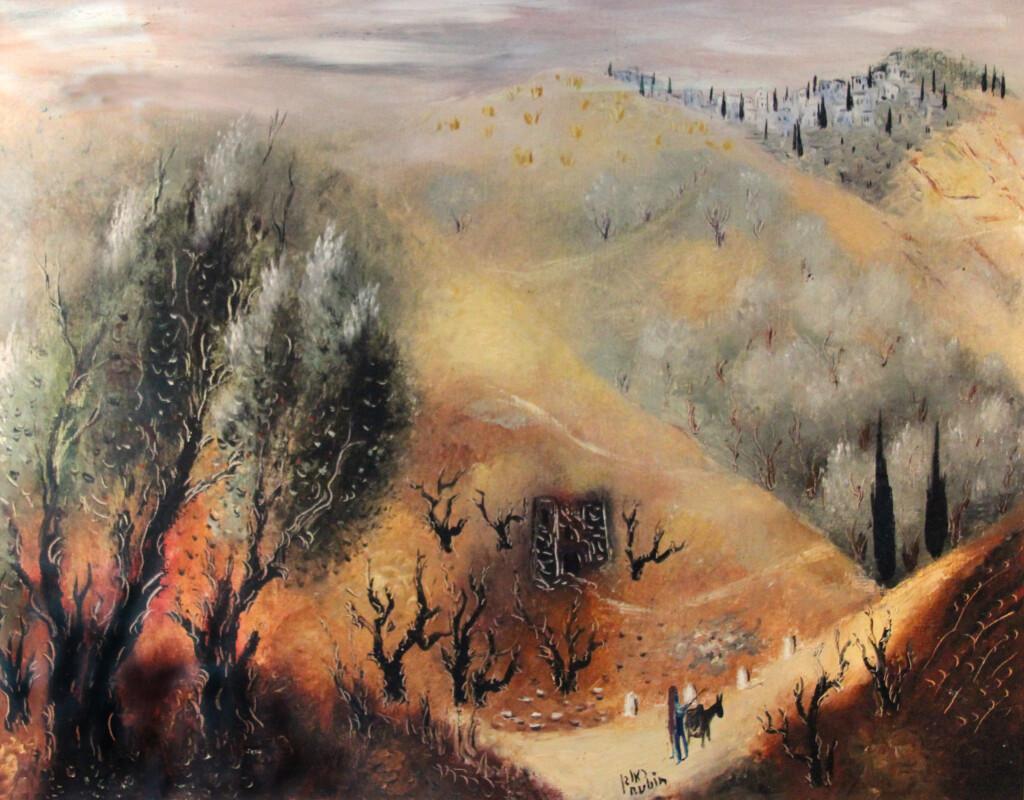TIOH Art Tour: Galilee Landscape
- By Reuven Rubin
- Israel, 1956-58
- Oil on Canvas
- Gift of Max Leo

Rubin Reuven was born in 1893in Lasi, Romania. He studied art at the Bucharest Academy of Fine Arts and the Acadimie Julian in Paris before moving to Jaffa, Ottoman Palestine in 1912 and becoming a founding member of the Bezalel Academy of Arts and Design. There he became a pivotal figure in the determination of what should look Israeli art like. There was no Israeli art in the early 20th century. Rubin Reuven became the founder of what we now might call the Eretz Israel style.
Rubin’s work is characterized by its bright colors, bold brushstrokes, and stylized figures. He often painted scenes of rural Palestine, as well as portraits of Jewish and Arab people. His work is known for its celebration of Jewish life and culture.
Rubin was a prolific artist who produced over 3,000 paintings, drawings, and prints. His work is included in the collections of major museums around the world, including the Israel Museum, the Metropolitan Museum of Art, and the Museum of Modern Art.
Galilee Landscape is an excellent example of Eretz Israel style. In it, we see a sun-drenched landscape. Unlike Chagall, where the blue, cold tones of a northern winter is never far away, Rubin lets warm brown tones dominate the foreground. The landscape is vast – hills spread far into the distance. While Israel as a small country on the map, for Rubin, this land is big. The trees are not freshly planted, but old cypress, olive, and cedar trees which have dominated the landscape since biblical times. There is a solitary figure with a donkey traveling along the path. People are but passing features in this land. On such a small scale, we may overlook this traveler. The painting was produced before the founding of the country of Israel, and the land is in no one’s possession yet – there are only passers through. The piece is not about a nation, it is a piece about a land.
Home